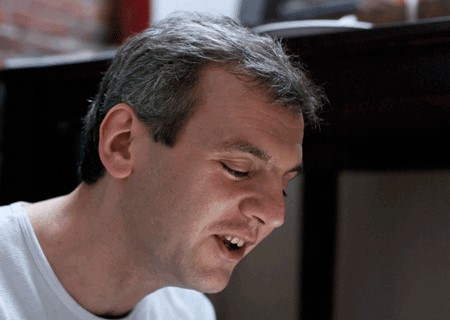Event: CMCI Brown Bag Lunch
Date: Monday, November 12
Time: 12:30 – 1:30 p.m.
Place: Collaboratorium, IRIC 352

Talk: “Performance of a bacterial cell as an energy conversion device in terms of energy-return-on-investment determined from atomic-detail structural models,” presented by Melih Sener, Theoretical and Computational Biophysics Group, Beckman Institute, UIUC, https://www.ks.uiuc.edu/~melih/
Abstract: Bioenergetic processes in cells involve hundreds of cooperating proteins and span length and time scales ranging from electronic excitation transfer (picoseconds) to organelle-scale diffusion and ATP synthesis (milliseconds). These disparate scales require a combination of experimental and theoretical approaches for determining structure and function at atomic, supra-molecular, and cell levels of organization. A cell-scale observable, namely, doubling time as a function of growth light intensity, is determined for a phototrophic bacterium, Rba. sphaeroides, using a multi-scale formalism for energy conversion. The approach is based on computing the energy-return-on-investment (EROI) time, defined as the time for the bacterium or a subcomponent to produce enough ATP to manufacture a new copy. The EROI is determined through atomic-detail structural and functional models of bacterial bioenergetic domains, employing AFM, cryo-electron tomography, mass spectrometry, crystallography, and spectroscopy data modalities. The hierarchy of time scales (ps-ms) is addressed via a chain of computational models for each scale, from electronic excitation transfer to structure-based rate kinetics, wherein the output of each model becomes an input parameter for the next scale. The EROI is formulated in relation to cell doubling time for a controlled growth environment that removes energy expenditure channels other than replication and base metabolism as well as energy input channels other than light absorption. Under these controlled conditions, the approach successfully reproduces light-dependence of growth behavior across nearly three orders of magnitude of illumination. Rational design principles for bioengineered energy solutions are revealed by identifying bottlenecks of energy conversion at protein level. The EROI also provides a systems-level integrative performance metric for quantifying evolutionary competitiveness between species as well as a comparison to artificial energy harvesting systems. Current efforts extending this approach to structural models from cyanobacterial and granal bioenergetic domains will also be presented.
Zoom link: https://uidaho.zoom.us/j/988406816
Meeting ID: 988 406 816
